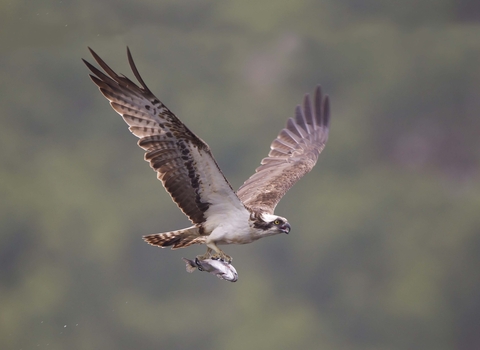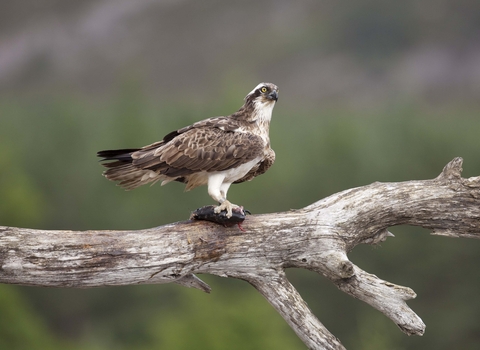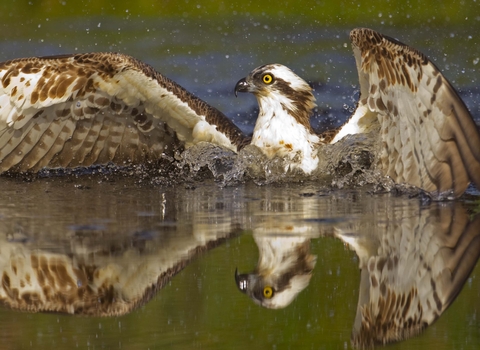
©Peter Cairns/2020

©Peter Cairns/2020VISION

©Peter Cairns/2020VISION
Osprey
A great way to get up close and personal with the magnificent osprey is via one of the many nestcams set-up in the places that it breeds: Scotland, Cumbria, Wales and the East Midlands.
Scientific name
Pandion haliaetusWhen to see
March to SeptemberSpecies information
Category
Statistics
Length: 56cmWingspan: 1.6m
Weight: 1.5kg
Average lifespan: 9 years
Classified in the UK as Amber under the Birds of Conservation Concern 5: the Red List for Birds (2021). Protected in the UK under the Wildlife and Countryside Act, 1981.
Habitats
About
The osprey is no stranger to fame and attention - its pursuits have been followed closely by nestcams in the locations where it breeds: Speyside and Perth in Scotland, Kielder, Cumbria and East Midlands in England, and the Dyfi Valley in Wales. A migratory bird, it is present in the UK in summer. Ospreys eat fish, catching them in spectacular fashion as they dive towards lakes and lochs, stretch out their talons and scooping them out of the water with ease.How to identify
The osprey is a brown-and-white bird which could possibly be mistaken for a seagull at a distance. The osprey is a large bird of prey with dark brown upperparts and contrasting white underparts that can appear mottled in females. Their heads are white with a dark brown through their eyes. Their wings during flight show strong barring and distinctively dark brown, angled ‘wrists’.Distribution
Nests in parts of Scotland, Cumbria, the East Midlands and Wales. Can also be spotted at large waterbodies across the country during migration.In our area
Osprey are uncommon but are a regular passage migrant.
Did you know?
Ospreys migrate to West Africa during winter; satellite tracking has shown them flying up to 430 km in just one day. It takes them about 20 flying days to complete the journey, but, in autumn, birds stop off to refuel at lakes and reservoirs.Osprey are uncommon but are a regular passage migrant.
